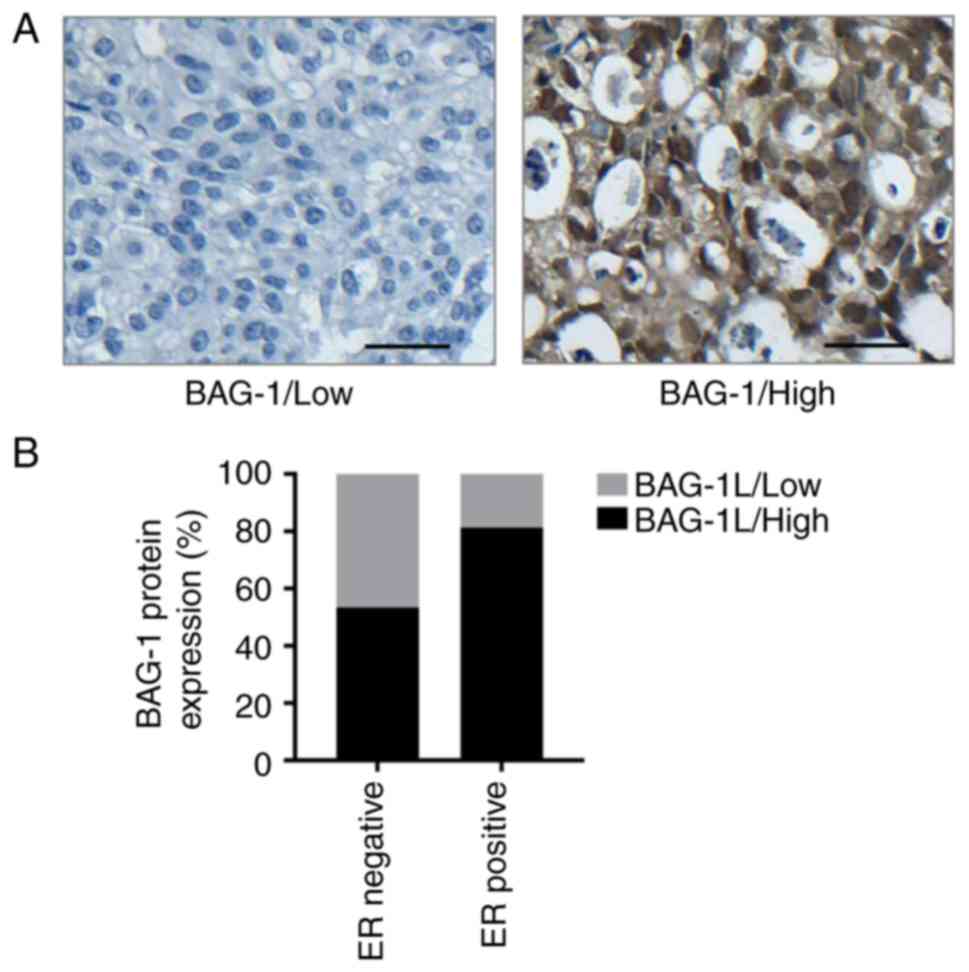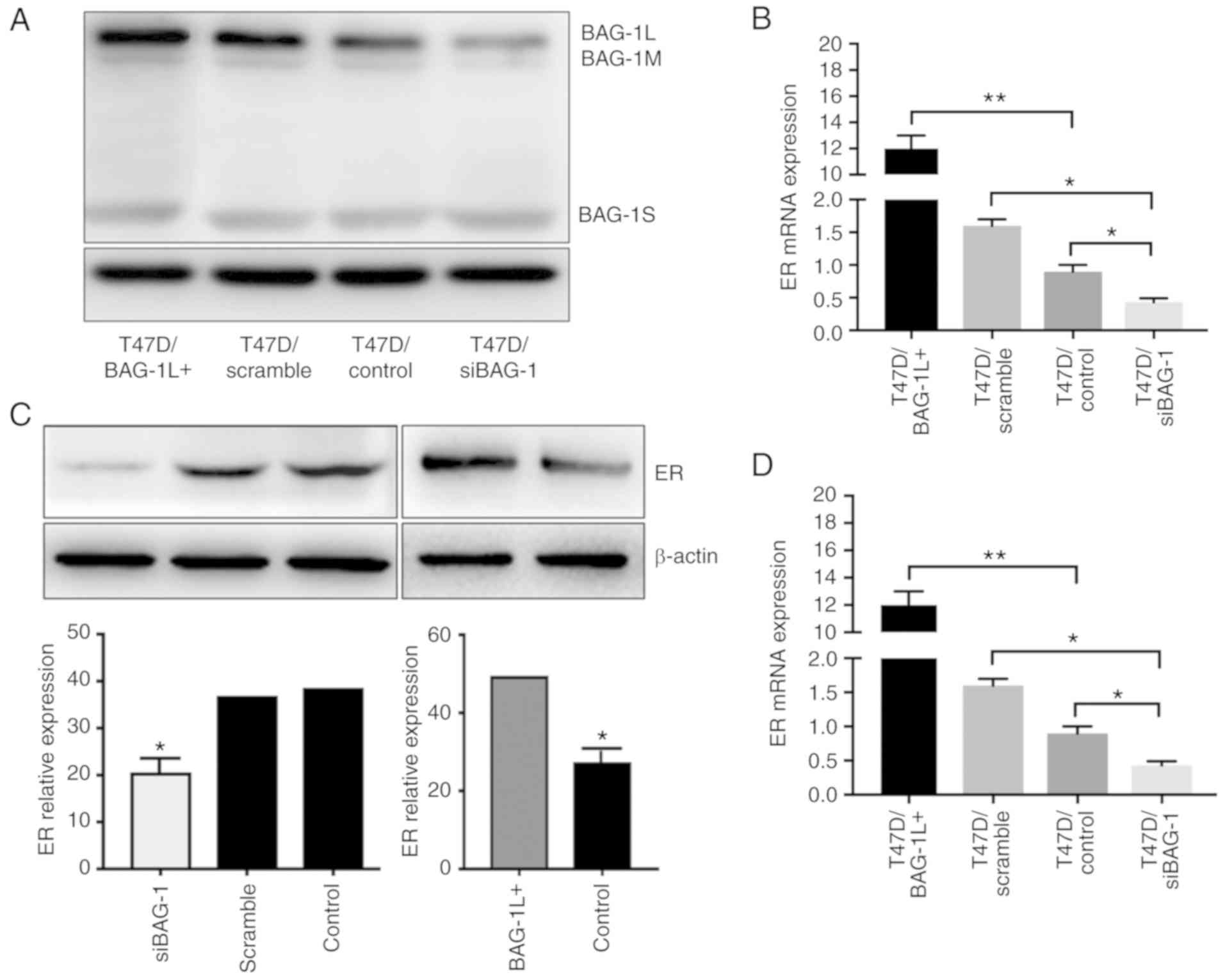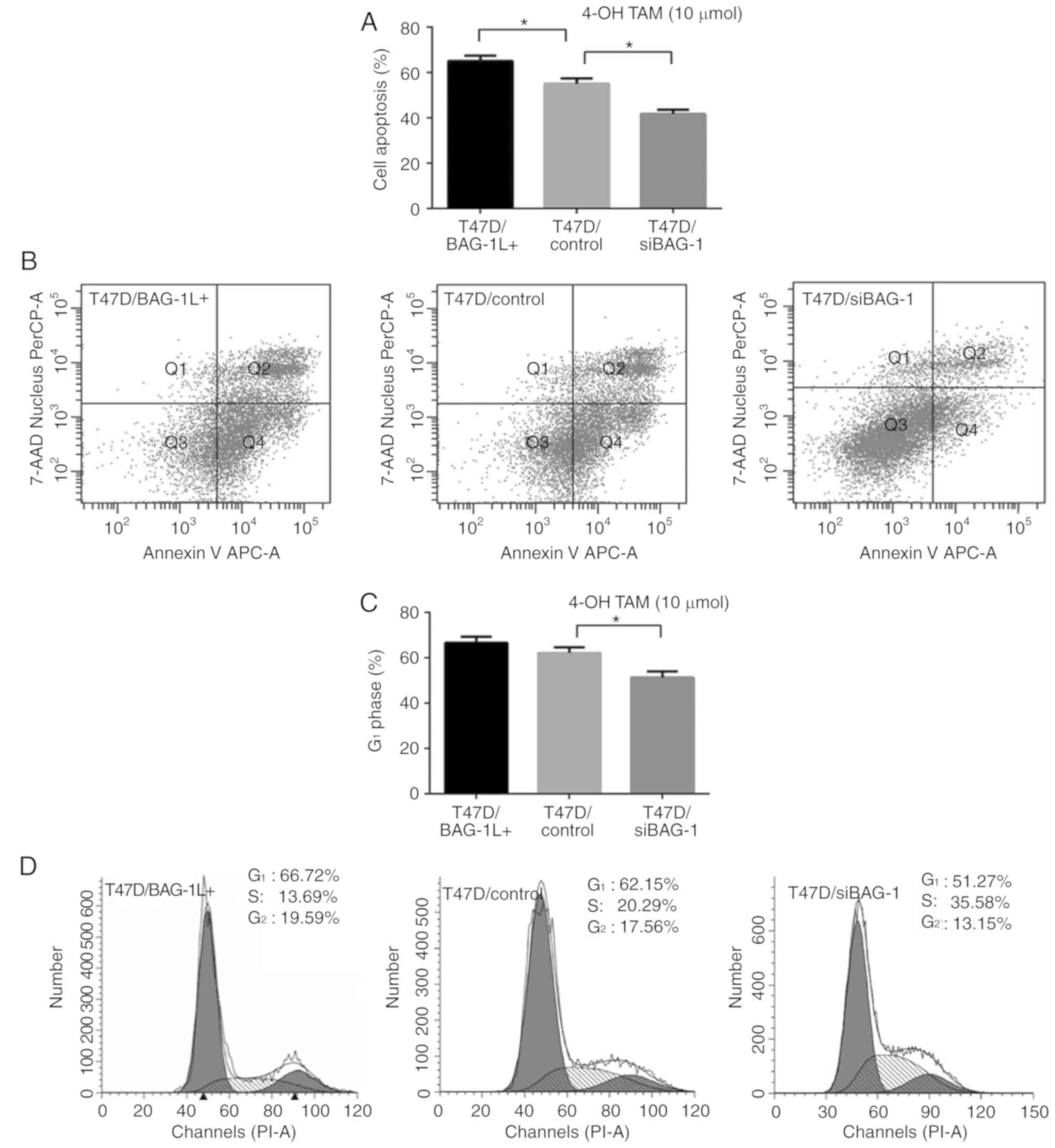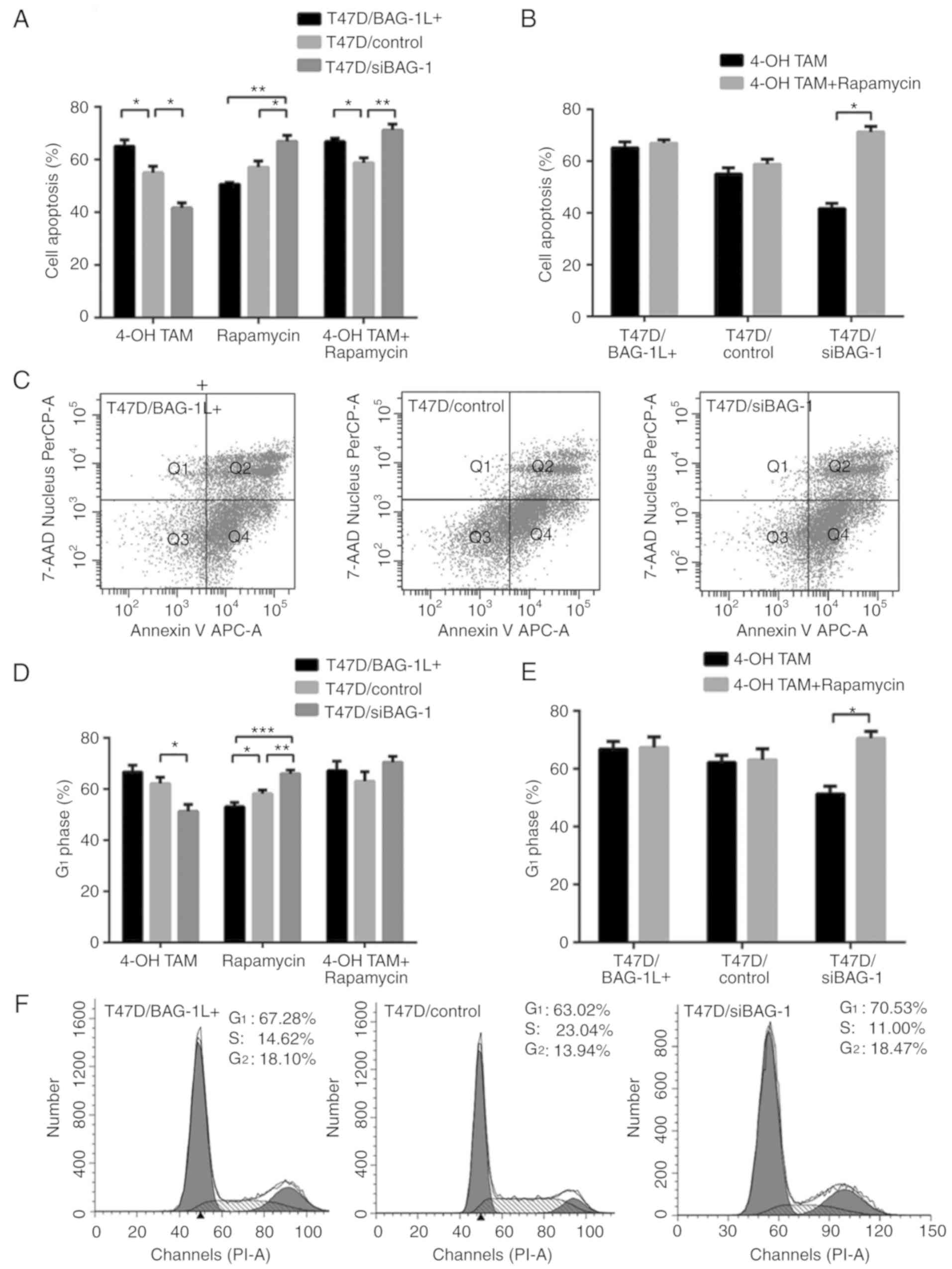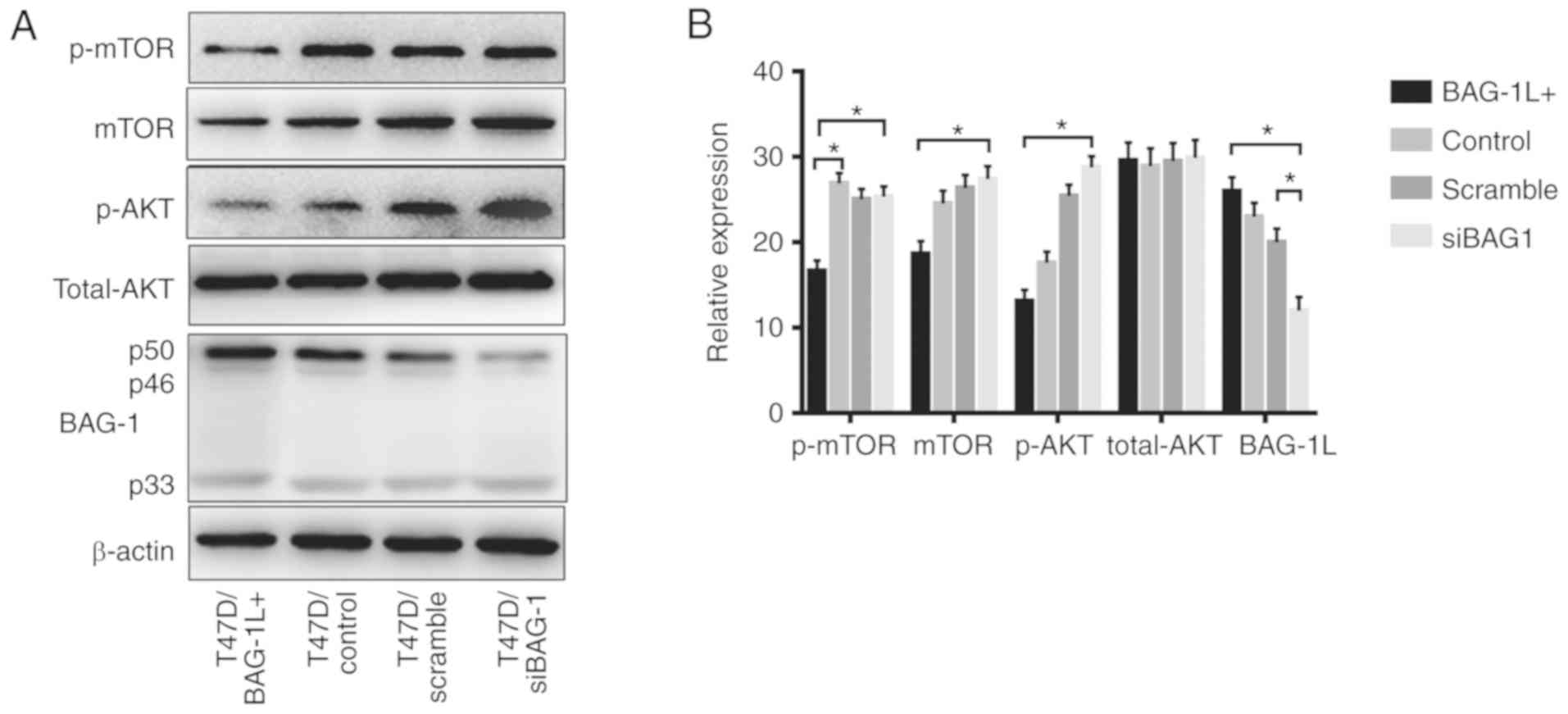|
1
|
Setiawan VW, Monroe KR, Wilkens LR,
Kolonel LN, Pike MC and Henderson BE: Breast cancer risk factors
defined by estrogen and progesterone receptor status: The
multiethnic cohort study. Am J Epidemiol. 169:1251–1259. 2009.
View Article : Google Scholar : PubMed/NCBI
|
|
2
|
Li CI, Daling JR and Malone KE: Incidence
of invasive breast cancer by hormone receptor status from 1992 to
1998. J Clin Oncol. 21:28–34. 2003. View Article : Google Scholar : PubMed/NCBI
|
|
3
|
Systemic treatment of early breast cancer
by hormonal, cytotoxic, or immune therapy. 133 randomised trials
involving 31,000 recurrences and 24,000 deaths among 75,000 women.
Early Breast Cancer Trialists' Collaborative Group. Lancet.
339:71–85. 1992.PubMed/NCBI
|
|
4
|
Yue W, Fan P, Wang J, Li Y and Santen RJ:
Mechanisms of acquired resistance to endocrine therapy in
hormone-dependent breast cancer cells. J Steroid Biochem Mol Biol.
106:102–110. 2007. View Article : Google Scholar : PubMed/NCBI
|
|
5
|
Takayama S, Sato T, Krajewski S, Kochel K,
Irie S, Millan JA and Reed JC: Cloning and functional analysis of
BAG-1: A novel Bcl-2-binding protein with anti-cell death activity.
Cell. 80:279–284. 1995. View Article : Google Scholar : PubMed/NCBI
|
|
6
|
Wang HG, Takayama S, Rapp UR and Reed JC:
Bcl-2 interacting protein, BAG-1, binds to and activates the kinase
Raf-1. Proc Natl Acad Sci USA. 93:7063–7068. 1996. View Article : Google Scholar : PubMed/NCBI
|
|
7
|
Takayama S, Bimston DN, Matsuzawa S,
Freeman BC, Aime-Sempe C, Xie Z, Morimoto RI and Reed JC: BAG-1
modulates the chaperone activity of Hsp70/Hsc70. EMBO J.
16:4887–4896. 1997. View Article : Google Scholar : PubMed/NCBI
|
|
8
|
Devireddy LR, Kumar KU, Pater MM and Pater
A: BAG-1, a novel Bcl-2-interacting protein, activates expression
of human JC virus. J Gen Virol. 81:351–357. 2000. View Article : Google Scholar : PubMed/NCBI
|
|
9
|
Zhou R, Gray NA, Yuan P, Li X, Chen J,
Chen G, Damschroder-Williams P, Du J, Zhang L and Manji HK: The
anti-apoptotic, glucocorticoid receptor cochaperone protein BAG-1
is a long-term target for the actions of mood stabilizers. J
Neurosci. 25:4493–4502. 2005. View Article : Google Scholar : PubMed/NCBI
|
|
10
|
Hinitt CA, Wood J, Lee SS, Williams AC,
Howarth JL, Glover CP, Uney JB and Hague A: BAG-1 enhances
cell-cell adhesion, reduces proliferation and induces
chaperone-independent suppression of hepatocyte growth
factor-induced epidermal keratinocyte migration. Exp Cell Res.
316:2042–2060. 2010. View Article : Google Scholar : PubMed/NCBI
|
|
11
|
Clemo NK, Collard TJ, Southern SL, Edwards
KD, Moorghen M, Packham G, Hague A, Paraskeva C and Williams AC:
BAG-1 is up-regulated in colorectal tumour progression and promotes
colorectal tumour cell survival through increased NF-kappaB
activity. Carcinogenesis. 29:849–857. 2008. View Article : Google Scholar : PubMed/NCBI
|
|
12
|
Wang YD, Ha MW, Cheng J, Zhang WL, Cong X,
Tong CY and Sun J: The role of expression and polymorphism of the
BAG-1 gene in response to platinum-based chemotherapeutics in
NSCLC. Oncol Rep. 27:979–986. 2012. View Article : Google Scholar : PubMed/NCBI
|
|
13
|
Ni W, Chen B, Zhou G, Lu C, Xiao M, Guan
C, Zhang Y, He S, Shen A and Ni R: Overexpressed nuclear BAG-1 in
human hepatocellular carcinoma is associated with poor prognosis
and resistance to doxorubicin. J Cell Biochem. 114:2120–2130. 2013.
View Article : Google Scholar : PubMed/NCBI
|
|
14
|
Ozfiliz P, Kizilboga T, Demir S, Alkurt G,
Palavan-Unsal N, Arisan ED and Dinler-Doganay G: Bag-1 promotes
cell survival through c-Myc-mediated ODC upregulation that is not
preferred under apoptotic stimuli in MCF-7 cells. Cell Biochem
Funct. 33:293–307. 2015. View
Article : Google Scholar : PubMed/NCBI
|
|
15
|
Papadakis E, Robson N, Yeomans A, Bailey
S, Laversin S, Beers S, Sayan AE, Ashton-Key M, Schwaiger S,
Stuppner H, et al: A combination of trastuzumab and BAG-1
inhibition synergistically targets HER2 positive breast cancer
cells. Oncotarget. 7:18851–18864. 2016. View Article : Google Scholar : PubMed/NCBI
|
|
16
|
Packham G, Brimmell M and Cleveland JL:
Mammalian cells express two differently localized Bag-1 isoforms
generated by alternative translation initiation. Biochem J.
328:807–813. 1997. View Article : Google Scholar : PubMed/NCBI
|
|
17
|
Takayama S, Krajewski S, Krajewska M,
Kitada S, Zapata JM, Kochel K, Knee D, Scudiero D, Tudor G, Miller
GJ, et al: Expression and location of Hsp70/Hsc-binding
anti-apoptotic protein BAG-1 and its variants in normal tissues and
tumor cell lines. Cancer Res. 58:3116–3131. 1998.PubMed/NCBI
|
|
18
|
Millar EK, Anderson LR, McNeil CM, O'Toole
SA, Pinese M, Crea P, Morey AL, Biankin AV, Henshall SM, Musgrove
EA, et al: BAG-1 predicts patient outcome and tamoxifen
responsiveness in ER-positive invasive ductal carcinoma of the
breast. Br J Cancer. 100:123–133. 2009. View Article : Google Scholar : PubMed/NCBI
|
|
19
|
Cutress RI, Townsend PA, Sharp A, Maison
A, Wood L, Lee R, Brimmell M, Mullee MA, Johnson PW, Royle GT, et
al: The nuclear BAG-1 isoform, BAG-1L, enhances oestrogen-dependent
transcription. Oncogene. 22:4973–4982. 2003. View Article : Google Scholar : PubMed/NCBI
|
|
20
|
Paik S, Shak S, Tang G, Kim C, Baker J,
Cronin M, Baehner FL, Walker MG, Watson D, Park T, et al: A
multigene assay to predict recurrence of tamoxifen-treated,
node-negative breast cancer. N Engl J Med. 351:2817–2826. 2004.
View Article : Google Scholar : PubMed/NCBI
|
|
21
|
Livak KJ and Schmittgen TD: Analysis of
relative gene expression data using real-time quantitative PCR and
the 2ΔΔCT method. Methods. 25:402–408. 2001.
View Article : Google Scholar : PubMed/NCBI
|
|
22
|
Chen JM, Dando PM, Stevens RA, Fortunato M
and Barrett AJ: Cloning and expression of mouse legumain, a
lysosomal endopeptidase. Biochem J. 335:111–117. 1998. View Article : Google Scholar : PubMed/NCBI
|
|
23
|
Ciruelos Gil EM: Targeting the
PI3K/AKT/mTOR pathway in estrogen receptor-positive breast cancer.
Cancer Treat Rev. 40:862–871. 2014. View Article : Google Scholar : PubMed/NCBI
|
|
24
|
Ghayad SE, Bieche I, Vendrell JA, Keime C,
Lidereau R, Dumontet C and Cohen PA: mTOR inhibition reverses
acquired endocrine therapy resistance of breast cancer cells at the
cell proliferation and gene-expression levels. Cancer Sci.
99:1992–2003. 2008.PubMed/NCBI
|
|
25
|
Chang SB, Miron P, Miron A and Iglehart
JD: Rapamycin inhibits proliferation of estrogen-receptor-positive
breast cancer cells. J Surg Res. 138:37–44. 2007. View Article : Google Scholar : PubMed/NCBI
|
|
26
|
Brimmell M, Burns JS, Munson P, McDonald
L, O'Hare MJ, Lakhani SR and Packham G: High level expression of
differentially localized BAG-1 isoforms in some oestrogen
receptor-positive human breast cancers. Br J Cancer. 81:1042–1051.
1999. View Article : Google Scholar : PubMed/NCBI
|
|
27
|
Turner BC, Krajewski S, Krajewska M,
Takayama S, Gumbs AA, Carter D, Rebbeck TR, Haffty BG and Reed JC:
BAG-1: A novel biomarker predicting long-term survival in
early-stage breast cancer. J Clin Oncol. 19:992–1000. 2001.
View Article : Google Scholar : PubMed/NCBI
|
|
28
|
Naderi A, Teschendorff AE, Barbosa-Morais
NL, Pinder SE, Green AR, Powe DG, Robertson JF, Aparicio S, Ellis
IO, Brenton JD, et al: A gene-expression signature to predict
survival in breast cancer across independent data sets. Oncogene.
26:1507–1516. 2007. View Article : Google Scholar : PubMed/NCBI
|
|
29
|
Moriyama T, Littell RD, Debernardo R,
Oliva E, Lynch MP, Rueda BR and Duska LR: BAG-1 expression in
normal and neoplastic endometrium. Gynecol Oncol. 94:289–295. 2004.
View Article : Google Scholar : PubMed/NCBI
|
|
30
|
Beeram M, Tan QT, Tekmal RR, Russell D,
Middleton A and DeGraffenried LA: Akt-induced endocrine therapy
resistance is reversed by inhibition of mTOR signaling. Ann Oncol.
18:1323–1328. 2007. View Article : Google Scholar : PubMed/NCBI
|
|
31
|
McCubrey JA, Davis NM, Abrams SL, Montalto
G, Cervello M, Libra M, Nicoletti F, D'Assoro AB, Cocco L, Martelli
AM and Steelman LS: Targeting breast cancer initiating cells:
Advances in breast cancer research and therapy. Adv Biol Regul.
56:81–107. 2014. View Article : Google Scholar : PubMed/NCBI
|
|
32
|
Gonzalez-Angulo AM, Ferrer-Lozano J,
Stemke-Hale K, Sahin A, Liu S, Barrera JA, Burgues O, Lluch AM,
Chen H, Hortobagyi GN, et al: PI3K pathway mutations and PTEN
levels in primary and metastatic breast cancer. Mol Cancer Ther.
10:1093–1101. 2011. View Article : Google Scholar : PubMed/NCBI
|
|
33
|
Pérez-Tenorio G and Stål O; Southeast
Sweden Breast Cancer Group, : Activation of AKT/PKB in breast
cancer predicts a worse outcome among endocrine treated patients.
Br J Cancer. 86:540–545. 2002. View Article : Google Scholar : PubMed/NCBI
|
|
34
|
Tokunaga E, Kimura Y, Oki E, Ueda N,
Futatsugi M, Mashino K, Yamamoto M, Ikebe M, Kakeji Y, Baba H and
Maehara Y: Akt is frequently activated in HER2/neu-positive breast
cancers and associated with poor prognosis among hormone-treated
patients. Int J Cancer. 118:284–289. 2006. View Article : Google Scholar : PubMed/NCBI
|
|
35
|
Campbell RA, Bhat-Nakshatri P, Patel NM,
Constantinidou D, Ali S and Nakshatri H: Phosphatidylinositol
3-kinase/AKT-mediated activation of estrogen receptor alpha: A new
model for anti-estrogen resistance. J Biol Chem. 276:9817–9824.
2001. View Article : Google Scholar : PubMed/NCBI
|
|
36
|
deGraffenried LA, Friedrichs WE, Russell
DH, Donzis EJ, Middleton AK, Silva JM, Roth RA and Hidalgo M:
Inhibition of mTOR activity restores tamoxifen response in breast
cancer cells with aberrant Akt Activity. Clin Cancer Res.
10:8059–8067. 2004. View Article : Google Scholar : PubMed/NCBI
|
|
37
|
Baselga J, Campone M, Piccart M, Burris HA
III, Rugo HS, Sahmoud T, Noguchi S, Gnant M, Pritchard KI, Lebrun
F, et al: Everolimus in postmenopausal hormone-receptor-positive
advanced breast cancer. N Engl J Med. 366:520–529. 2012. View Article : Google Scholar : PubMed/NCBI
|
|
38
|
Bachelot T, Bourgier C, Cropet C,
Ray-Coquard I, Ferrero JM, Freyer G, Abadie-Lacourtoisie S, Eymard
JC, Debled M, Spaëth D, et al: Randomized phase II trial of
everolimus in combination with tamoxifen in patients with hormone
receptor-positive, human epidermal growth factor receptor
2-negative metastatic breast cancer with prior exposure to
aromatase inhibitors: A GINECO study. J Clin Oncol. 30:2718–2724.
2012. View Article : Google Scholar : PubMed/NCBI
|















